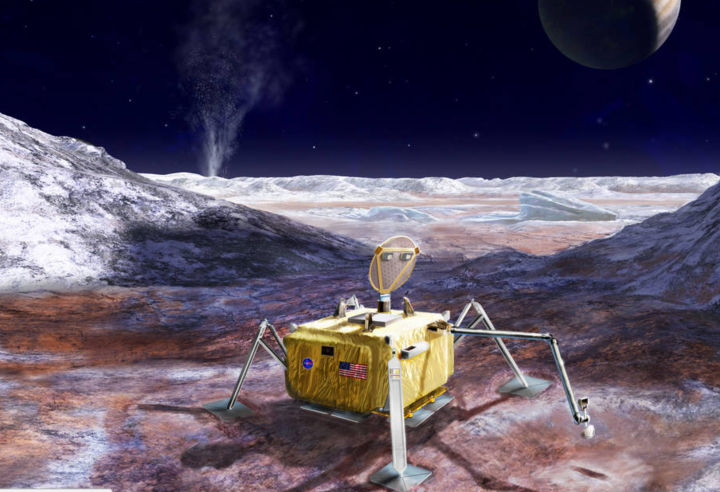
Landing on our own moon is so 1969. Scientists are now looking for new moons to explore. And in the running is Jupiter’s icy moon Europa, which may just be the next big point of curiosity for our space agency. Earlier this week, NASA announced initial findings from a “report on the potential science value of a lander on the surface [Europa],” and further noted that “the agency is now engaging the broader science community to open a discussion about its findings.”
Last year, NASA asked 21 scientists to conceptualize a lander whose destination would be Europa, and also determine whether such a mission would be feasible and what scientific gains might be achieved. It was a tall order, but just eight months later, the group handed over its report to the space agency.
“The primary goal is to search for evidence of life on Europa,” NASA notes of the new report. “The other goals are to assess the habitability of Europa by directly analyzing material from the surface, and to characterize the surface and subsurface to support future robotic exploration of Europa and its ocean.” As per their research, the scientists have reason to believe that Europa may have a global saltwater ocean, and that at the bottom of the ocean is a rocky, silicate floor, which could indeed contain the ingredients needed to sustain life.
There are plans for a solar-powered Europa multiple flyby mission, currently slated for launch in the early 2020’s. NASA says that this spacecraft (which is different from the new lander designed by the team of 21 scientists), “will arrive at Jupiter after a multi-year journey, orbiting the gas giant every two weeks for a series of 45 close flybys of Europa.” This mission will seek to determine Europa’s habitability, and also set the foundation for an actual landing.


